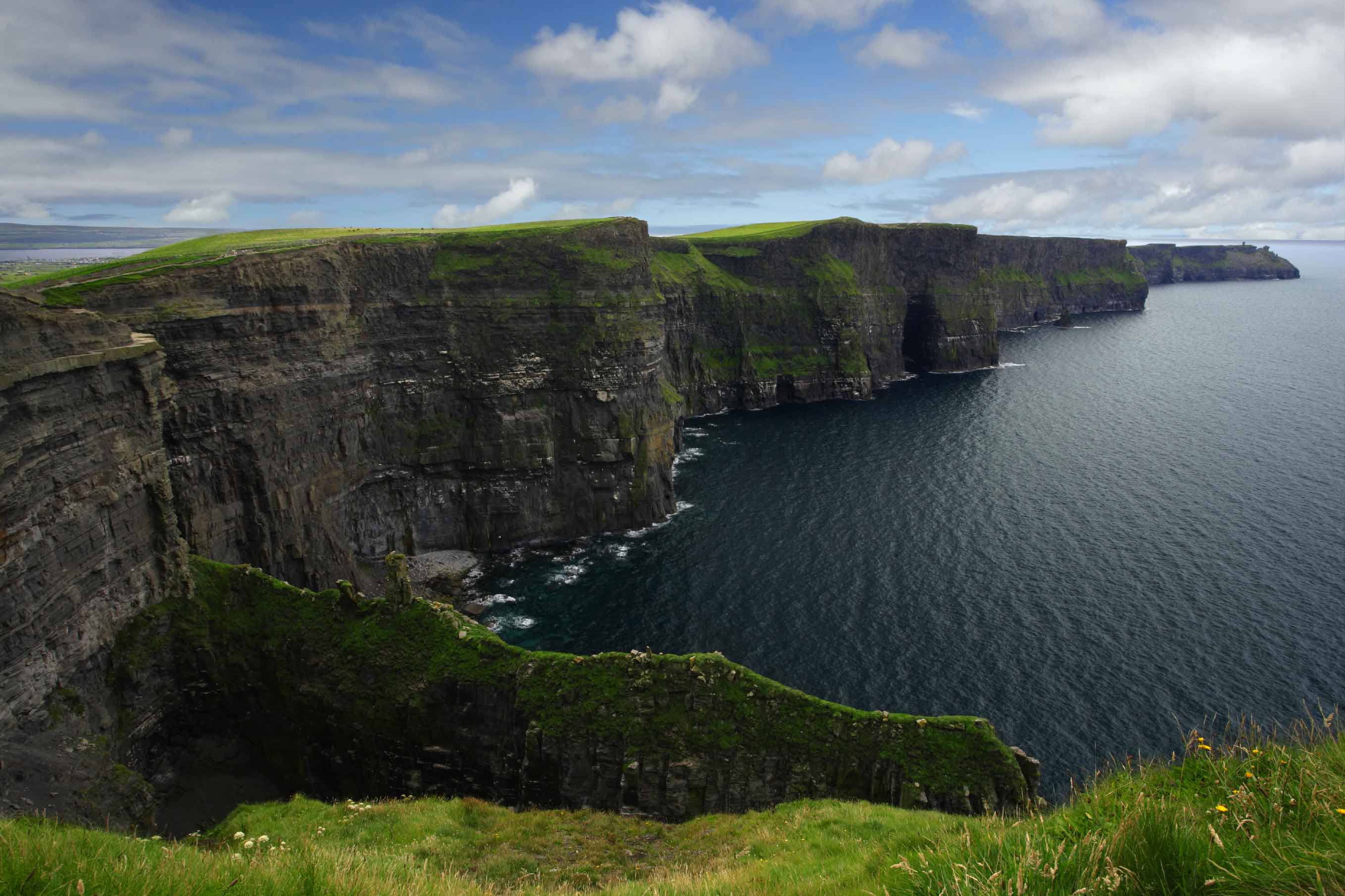
By Abby Hill
Instead of deer, sheep cross roads and hold up traffic. Stone castles sit with their ancient stories like a book waiting to be opened. For 10,000 years, Ireland’s population and rich history has continued to grow, welcoming tourists to investigate the beauties of their country.
The extensive dramatic landscape and range of outdoor activities in Ireland make it an ideal location for tourists of all interests.
“It is medicine to the soul to be in that land… words nor pictures could ever do it justice,” said Brett Hill, traveler and musician.
The historic land of Ireland is home to many castles and ruins each with their own personality. Castles such as Dunluce Castle and Blarney Castle conceal their stories within their walls for whichever tourist decides to unravel them. Other ruins such as Skellig Michael and Down Cathedral outline the part religion played in Ireland’s story.
“I liked being able to imagine what it would have been like in that exact spot long ago,” said Mikall Goddard.
Blarney Castle was created in the 10th century with a wooden structure. Since then, the building has been rebuilt two times with stone. Blarney is near Cork, Ireland, and receives more than 500,000 visitors a year. For over 200 years, world statesmen, literary giants, and legends of the silver screen have joined the millions of pilgrims climbing the steps to kiss the Blarney Stone. The Blarney Stone is a block of limestone built into the battlements of Blarney Castle. According to legend, kissing the stone endows the kisser with the gift of eloquence.
Another major tourist attraction on the coast of Ireland is Giant’s Causeway, a cluster of 40,000 hexagonal columns made some 60 million years ago from volcanic activity. According to ancient legend, the Irish warrior giant Finn McCool created the Giant’s Causeway so as to avoid getting his feet wet while walking between Northern Ireland and the coast of Scotland. There is now a visitor’s center that provides trail tours and information over the myths surrounding the location.
Many destinations have less history behind them but “make up for it with their beauty.” One step wrong and an innocent life would be taken by the 700-foot-long drop; however, the cliffs of Moher are another big tourist attraction. This destination provides trails due to the many people that visit but they lack railings, despite the 700-foot drop. Nevertheless, the cliffs reveal a breathtaking view.
Besides cliffs, beaches are one of the most visited destinations in Ireland. With fog looming over the water, Benone beach conceals beauty and potential for adventure. Trails do not map the land, rock hills line the five-mile-long hike. Inch Beach is part of the Dingle Peninsula and is often very empty, providing a calm atmosphere for visitors.
“The drive was gorgeous and really hilly,” said Cailie Fennel. “Inch beach was so pretty, the sand was really soft.”
Two hours away is the city of Galway. Galway is small town bursting with color and personality. It is known for its arty bohemian feel: brightly painted pubs, cafes with street performers, and small unique shop.
“Galway has a cozier hometown feel and gave a great spectrum of Ireland history,” Goddard said.
Galway is one of the last remaining cities that you can hear Irish being spoken in the streets, shops, and pubs. The warm atmosphere makes this location a magnet for students and tourists alike.
“In Ireland, you can definitely tell it’s city life, but the people do go at their own pace and aren’t rushing as much as Chicago I would say,” Goddard said.
Nearly two and a half hours away, cameras click as talkative tourists gaze in awe and wonder at the buildings that line the streets of Dublin, one of the most visited cities in Ireland. Dublin has a population similar to Boston and is very different from the Chicago we are used to in Illinois. Dublin lacks nearly as many people or skyrises, but is also an international economic center. Compared to Galway, Dublin is more geared towards tourists but still has the Irish feel.
“You can’t even compare. To see it in person is breathtaking, and not even my photos could do it justice. You are in awe of the country landscape the entire time,” said Goddard. “The grass is unbelievably green, and the details of the runes and old castles could never be captured by a camera. Definitely something you need to see for yourself in person.”